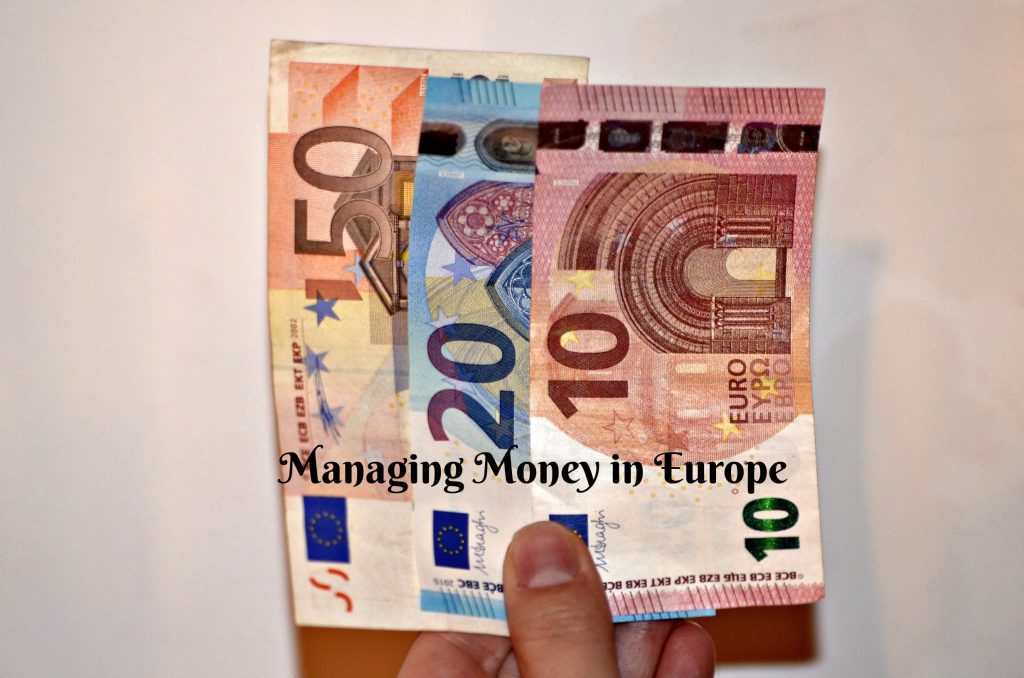So you’re planning a trip to Europe, but don’t want to waste money with hidden fees or getting ripped off at the money exchange booth. We lived in France and traveling throughout Europe for 4 years, so I can safely say we’ve learned a few things over the years – and made some costly mistakes. We put all our tips into one place to, hopefully, help you avoid our blunders.
Guide to Managing Money in Europe
Knowing the local currency is a must. Luckily, half the countries in Europe use the Euro – many of which are typical American tourist destinations. I’ve heard stories from my parents traveling Europe years ago and needing a different currency in every different country. What a pain!
Now, while most countries you will likely visit use the Euro, not all do. Here is a list of the countries that do not use the Euro and the currency they use instead:
- Albania (Albanian lek)*
- Azerbaijan (Azerbaijani manat)
- Belarus (Belarusian ruble)
- Bulgaria (Bulgarian lev)
- Croatia (Croatian kuna)
- Czech Republic (Czech koruna)
- Denmark (Danish krone)**
- Georgia (Georgian lari)
- Hungary (Hungarian forint)
- Iceland (Icelandic krona)
- Liechtenstein (Swiss franc)
- Macedonia (Second Macedonian denar)
- Moldova (Moldovan leu)
- Norway (Norwegian krone)**
- Poland (Polish złoty)
- Romania (Fourth Romanian leu)
- Russia (Russian ruble)
- Serbia (Serbian dinar)
- Sweden (Swedish krona)
- Switzerland (Swiss franc)
- Turkey (Turkish lira)***
- Ukraine (Ukrainian hryvnia)
- United Kingdom (Pound sterling)
*Some touristic places in Albania also accept Euros, Pounds and American Dollars.
** Some tourist places in Denmark and Norway also accept Euros.
*** We used euros in Ephesus, Turkey but I don’t think the exchange rate was the greatest.










